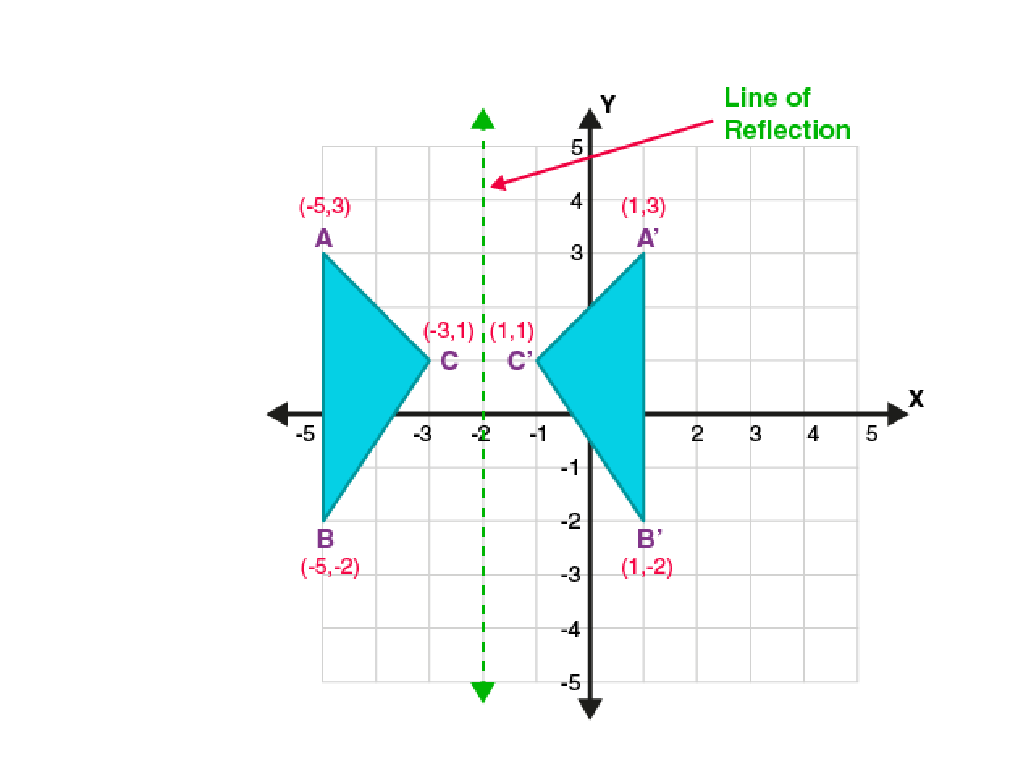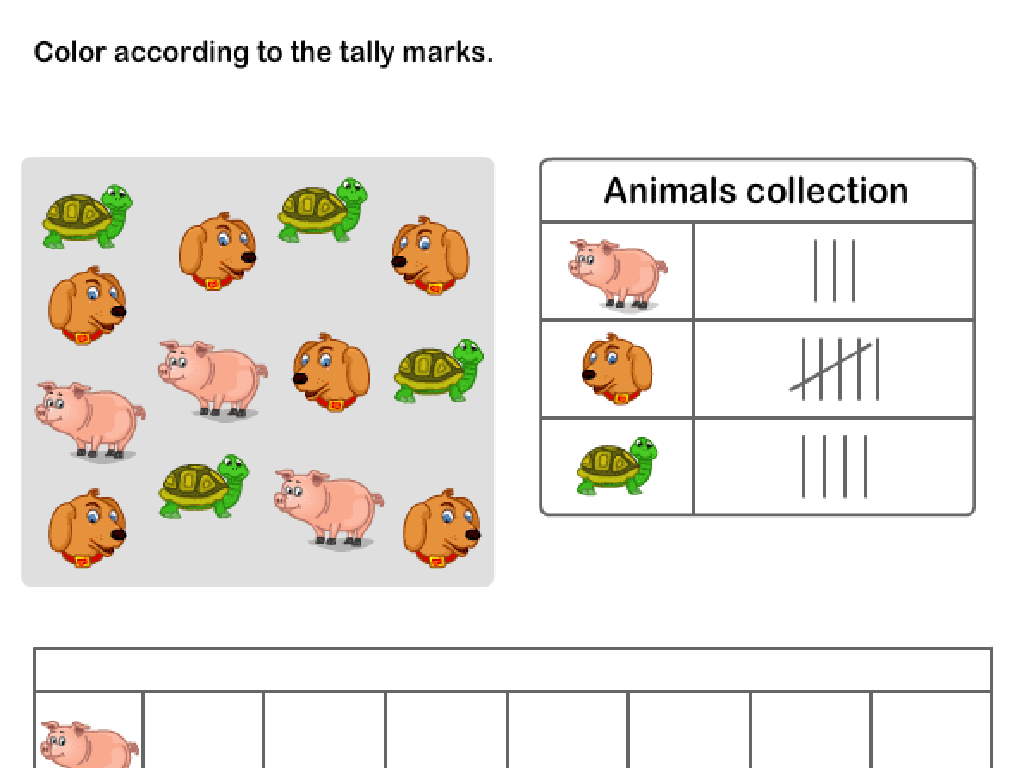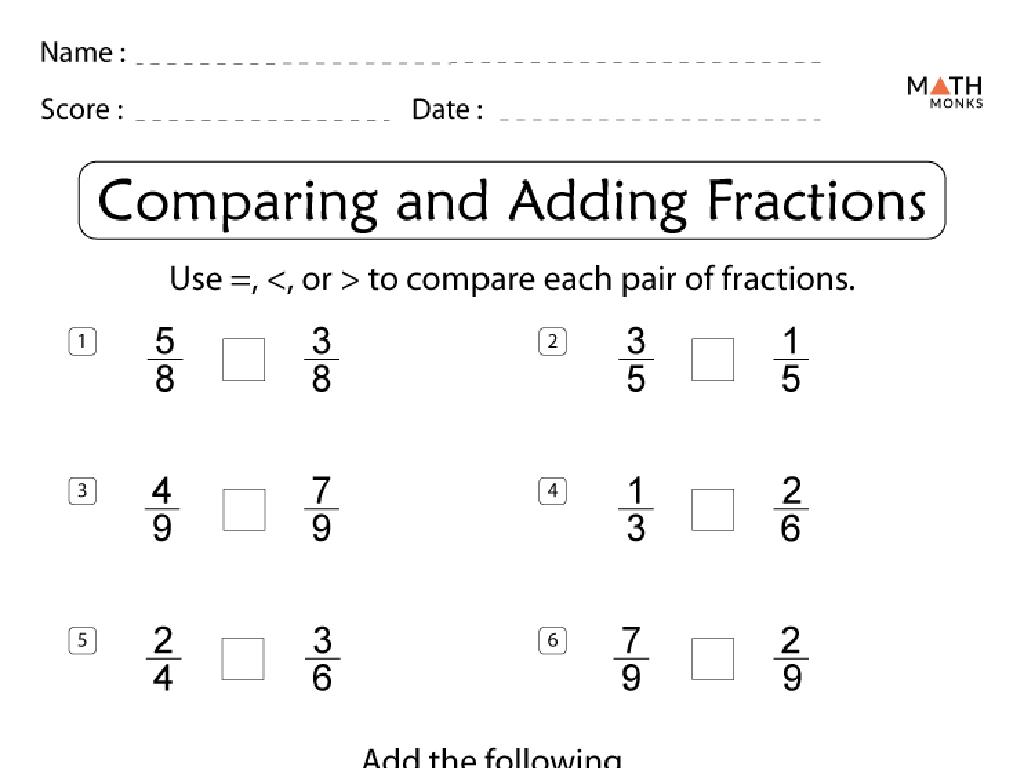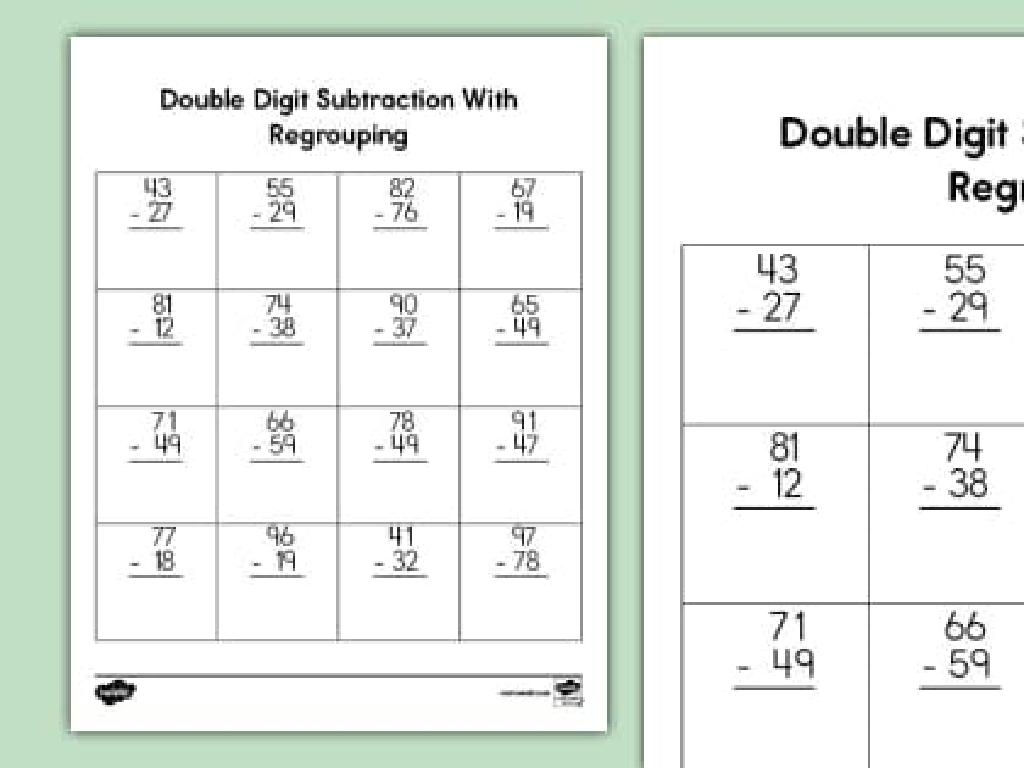Relationship Between Place Values
Subject: Math
Grade: Fourth grade
Topic: Place Value
Please LOG IN to download the presentation. Access is available to registered users only.
View More Content
Exploring Place Values
– Grasping the concept of place values
– Place values in counting and calculations
– Today’s goal: Relationship between places
– Understanding how each place value is 10 times the value to its right
– For example, in the number 530, the ‘5’ is in the hundreds place, which is 10 times more than the ‘3’ in the tens place.
|
This slide introduces students to the fundamental concept of place values, which is crucial for their understanding of the number system. Emphasize that each place value represents a power of 10, and as we move left, each place is 10 times greater than the one to its right. This understanding is key to performing operations like addition, subtraction, multiplication, and division. Use examples with actual numbers to illustrate the point. Today’s goal is to ensure students can identify and explain how the value of a digit changes depending on its position in a number. Activities can include comparing numbers, building numbers with manipulatives, and expanding numbers to show the value of each digit.
Exploring Place Value
– What is place value?
– It’s the value of where a digit is in a number.
– Digits have different values
– A digit’s value changes with its position in a number.
– Examples: Ones, Tens, Hundreds
– 1 in 321 is ‘One’, 2 is ‘Twenty’, 3 is ‘Three Hundred’.
– Understanding position importance
|
This slide introduces the concept of place value, which is fundamental in understanding numbers in math. Place value determines the value of a digit based on its position within a number. For example, in the number 321, the ‘1’ is in the ones place and represents just one, the ‘2’ is in the tens place and represents twenty, and the ‘3’ is in the hundreds place, representing three hundred. Emphasize that the same digit can represent different amounts depending on where it’s located in the number. Use additional examples to illustrate this point and ensure students grasp the concept of place value as it’s crucial for their understanding of larger numbers and mathematical operations like addition, subtraction, multiplication, and division.
Building Blocks of Numbers
– Base-Ten Blocks as a learning tool
– Base-Ten Blocks help visualize place values
– Each block’s place value role
– A single block is a ‘one’, a rod is ‘ten’, a flat is ‘hundred’
– Combining blocks to make numbers
– Stack and line up blocks to form new numbers
– Understanding larger numbers
|
This slide introduces Base-Ten Blocks as a concrete method for understanding place values, which is a fundamental concept in mathematics. Each type of block represents a different place value, allowing students to physically manipulate and combine them to form numbers. This hands-on approach helps students grasp the concept of tens, hundreds, and so on. Encourage students to practice with these blocks by building different numbers and observing how the number of blocks in each place value column changes. This will solidify their understanding of how larger numbers are constructed and the relationship between each place value.
Comparing Place Values
– Ten Ones vs. One Ten
– Ten ‘ones’ are the same as ‘one ten’.
– One Hundred vs. Ten Tens
– ‘One hundred’ is greater than ‘ten tens’ because it’s the next place value.
– Place Value Disks
– Visual tools representing different place values.
– Understanding greater value
– Why some numbers have more value even with same digits.
|
This slide aims to clarify the concept of place values by comparing different representations of numbers. Students should understand that while ten ‘ones’ can be grouped together to form ‘one ten’, they are conceptually different because of their place value. Similarly, ‘one hundred’ represents a larger value than ‘ten tens’ because it occupies the hundreds place, despite both being made up of ten ‘tens’. Place value disks will help students visualize these differences and grasp why place value is crucial in understanding the magnitude of numbers. Encourage students to use place value disks to represent numbers and see how the position of a digit affects its value. Discuss examples where the same digits represent different values based on their position.
The Magic of Moving Places
– Moving a digit left increases its value
– For example, 3 in 30 is ten times more than 3 in 3
– Each left shift multiplies the digit by 10
– 2 becomes 20, then 200 with two shifts to the left
– Moving a digit right decreases its value
– For example, 50 becomes 5 when moved one place right
– Each right shift divides the digit by 10
– 600 becomes 60, then 6 with two shifts to the right
|
This slide aims to teach students the concept of place value and how the value of a digit changes when its position moves within a number. Emphasize that moving a digit one place to the left multiplies its value by 10, making it ten times greater. Conversely, moving a digit one place to the right divides its value by 10, making it ten times smaller. Use examples on the board to demonstrate this concept, such as showing how the number 3 changes as it moves from the ones place to the tens place, and then to the hundreds place. Encourage students to practice with different numbers and to observe the pattern of multiplying and dividing by 10 as they move digits left and right.
Understanding Place Values with Money
– Use money to learn place values
– Money is a great way to understand place values, as it comes in 1s (pennies), 10s (dimes), and 100s (dollars).
– Pennies, dimes, and dollars
– 10 pennies make a dime, 10 dimes make a dollar. This shows the place value relationship.
– Group items by tens and hundreds
– Just like we group pennies to make a dime, we can group objects in tens and hundreds to understand larger numbers.
– Practice with real-life objects
– Use items like beads or blocks to physically group into tens and hundreds for hands-on learning.
|
This slide aims to help students grasp the concept of place values through the familiar context of money. By associating pennies with ones, dimes with tens, and dollars with hundreds, students can visually and conceptually understand how place values work. Encourage them to think about how many pennies are needed to make a dime and how many dimes are needed to make a dollar, reinforcing the idea of grouping by tens. Extend this concept to grouping everyday items, which can be a fun activity to solidify their understanding. Provide examples and encourage students to practice with real objects to create a tangible learning experience.
Let’s Practice Place Values!
– Interactive whiteboard number building
– Use the whiteboard to form numbers and see how place values change them.
– Class exercise on arranging digits
– Arrange given digits to create the biggest possible number.
– Pair work: comparing numbers
– Work with a partner to decide which of two numbers is larger based on place value.
– Understanding place value importance
|
This slide is designed to engage students in hands-on activities to deepen their understanding of place values. Start with an interactive whiteboard activity where students can drag and drop digits into different place values to build numbers. Follow this with a class exercise where students are given a set of digits and must arrange them to create the largest number possible, reinforcing the concept that digits have different values depending on where they are placed. Then, have students pair up to compare numbers and use their knowledge of place values to determine which is larger. Emphasize the importance of place values in everyday math, such as in money transactions, measurements, and when reading and comparing large numbers. Provide clear instructions and examples for each activity and encourage discussion among students to facilitate peer learning.
Place Value Scavenger Hunt Activity
– Find objects grouped by place values
– Create numbers with objects
– Use objects to represent ones, tens, hundreds
– Share your numbers with the class
– Discuss how you made your number
– Reflect on place value concepts
– How do different place values affect the number?
|
This interactive class activity is designed to help students understand the concept of place values in a fun and engaging way. Students will search the classroom for objects that can be grouped to represent ones, tens, and hundreds. They will then use these objects to create a number, physically arranging them to represent each place value. Afterward, students will present their numbers to the class, explaining the reasoning behind their groupings. This activity not only reinforces the relationship between place values but also encourages teamwork and communication. Possible variations include grouping students for collaborative learning or challenging them to find the highest or lowest number possible with the objects available.
Wrapping Up: Place Values
– Recap today’s place value lesson
– Why place values matter
– Helps with counting, math problems, and understanding money
– Homework: Place Value Worksheet
– Identify and compare place values in different numbers
– Be ready to discuss homework
|
As we conclude today’s lesson, it’s important to review the key concepts of place values that we’ve learned. Understanding place values is crucial as it forms the foundation for all higher mathematical concepts, including addition, subtraction, and understanding money. For homework, students will complete a worksheet that will reinforce their ability to identify and compare the place values of numbers. This will not only help solidify their understanding but also prepare them for more complex math problems. In the next class, we will discuss the worksheet answers and address any questions the students may have.






